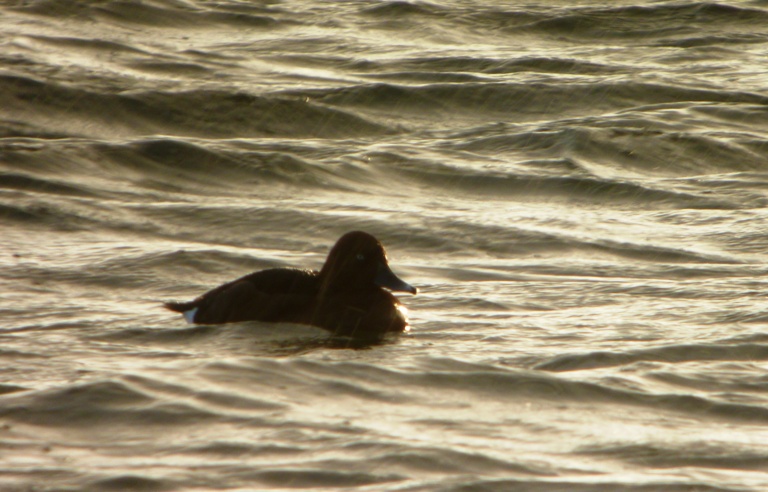Witoogeend
Aythya nyroca · Ferruginous Duck
| Datum | 5 December 2011 |
|---|---|
| Locatie | Wessem, Koeweide |
| Fotograaf |
|
| Bekeken | 9353 × |
| Deze ad. man Witoogeend werd gisteren ontdekt door Ton Cuijpers in een groep Tafeleenden. Eindelijk weer eens een wintervogel in Limburg. In 2010 hadden we een voorjaarsgeval in de provincie maar winterende ex. zijn de laatste jaren schaars geworden in dit voormalige "stronghold" voor de soort in de winter. |
Discussie
Rob Halff
·
5 December 2011 21:55
Max Berlijn
·
5 December 2011 22:25
Max Berlijn
·
15 March 2012 16:46, gewijzigd 15 March 2012 16:47
Max Berlijn
·
12 January 2017 23:50, gewijzigd 12 January 2017 23:51
Deze 2 Witoogeenden http://waarneming.nl/waarneming/view/133583818 werden voor het eerst gezien op de Hochterbampt (B) op 28-03-2012 en bevinden zich in de winter en het voorjaar op plekken in en rond dit gebied op de grens van NL en B. Ze zijn ongeringd voor zover we hebben kunnen zien. Het is een paartje en volgens voor ons onbevestigde verhalen hebben ze een of meerdere broedpogingen in de Hochterbampt ondernomen. Herkomst?? maar vooralsnog gewoon wild.
Max Berlijn
·
13 November 2017 08:40, gewijzigd 13 November 2017 11:04
We wisten dit al wel de afgelopen paar winters maar het checken van poten van Witoogeenden op het hebben van ringen is geen overbodige luxe meer. De herintroductie vogels komen dus mee met Tafeleenden die hier de winter doorbrengen. Op zich lijkt er niet zo veel mis met dit project (contra Lee zijn posting), maar voor de puristen onder ons is een ongeringde toch leuker en daar kregen we er gelukkig nog jaarlijks genoeg van.. Edit: Die projectringen zijn gelukkig goed zichtbaar
Max Berlijn
·
8 February 2019 16:12
3 ongeringde vogels, soms, bij elkaar toch erg leuk voor NL.
Gebruikers van het forum gaan akkoord met de forumregels.

